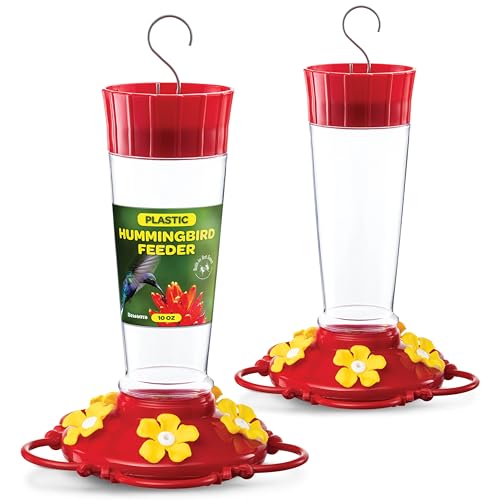How to keep ants out of hummingbird feeders – 6 tips to keep ants away from your feeding stations
Keep feeders ant-free and enjoy more visits from hummingbirds with our tried-and-tested techniques
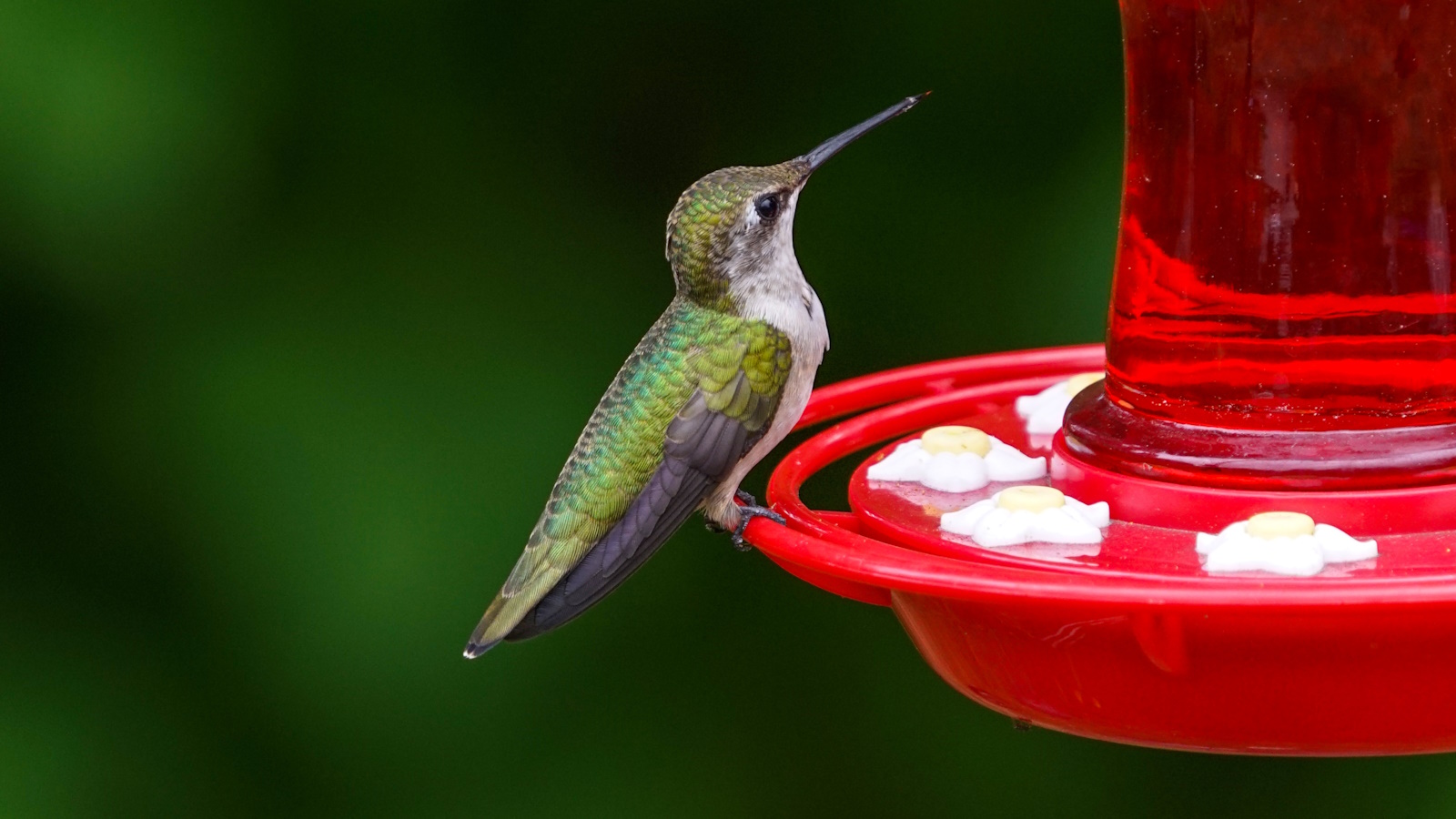

Having a dedicated feeder in your yard is a brilliant way to attract beautiful hummingbirds into backyards, adding a wildlife-friendly dimension to any outdoor space.
Although, given their sugary contents, it is often not just hummingbirds that they attract. The sugar water which these stunning birds love is also very attractive to other insects, and you may have to take some simple measures to get rid of ants from the feeders as the weather warms up.
Ants are a nuisance because they can contaminate the nectar and prevent hummingbirds from visiting, so it's worth learning how to fend them off before they become too much of a problem. Here, we share 6 tips to keep your feeders ant-free this year.
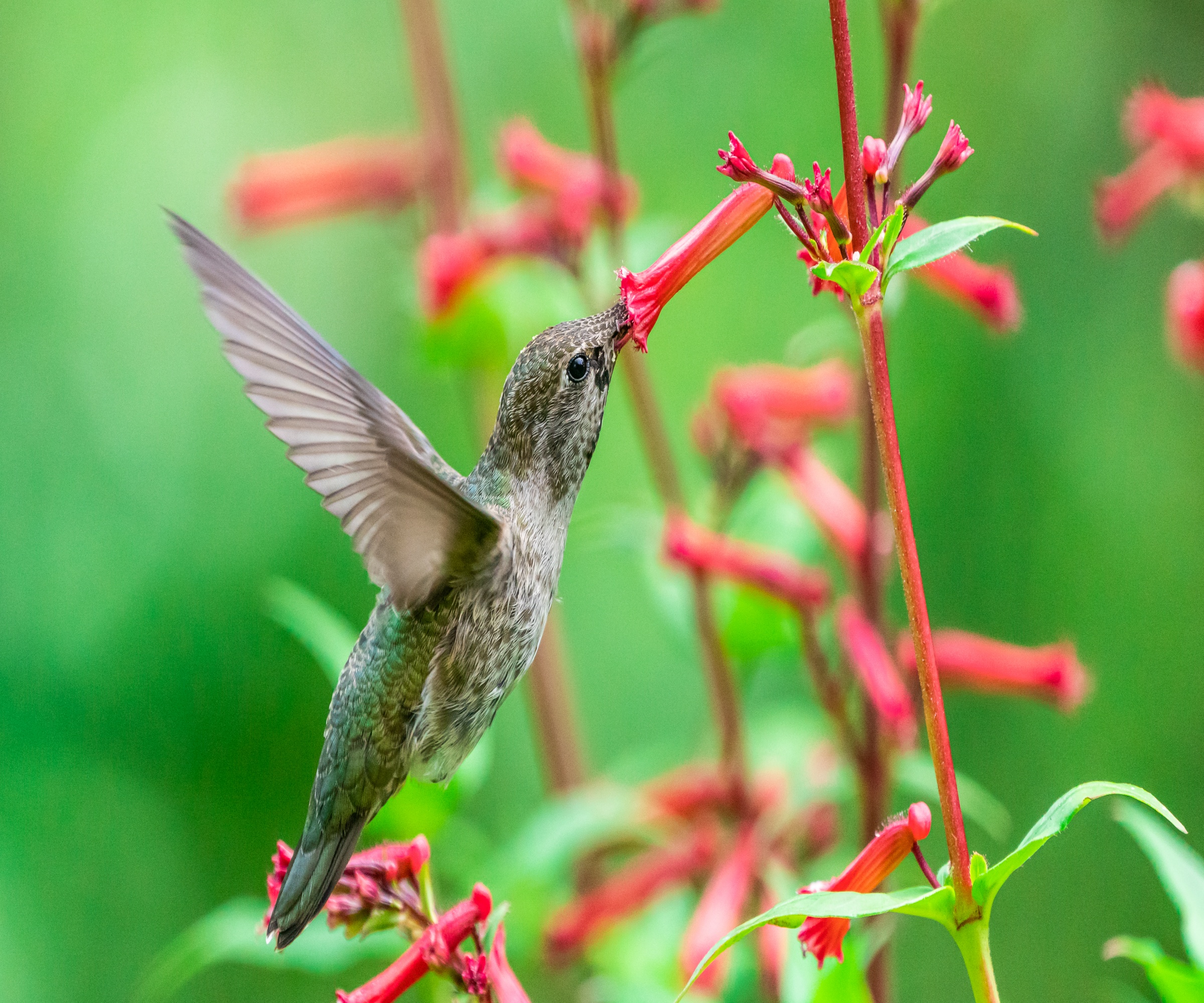
How to keep ants out of hummingbird feeders
Of course, knowing how to clean hummingbird feeders is key, as well as positioning the feeder in the optimal spot and knowing which ant-repelling methods to consider.
We turned to a wildlife expert for the best ways to keep ants out of hummingbird feeders, making for a more pleasant environment – both for the hummingbirds and for us.
1. Use an ant moat on your hummingbird feeder
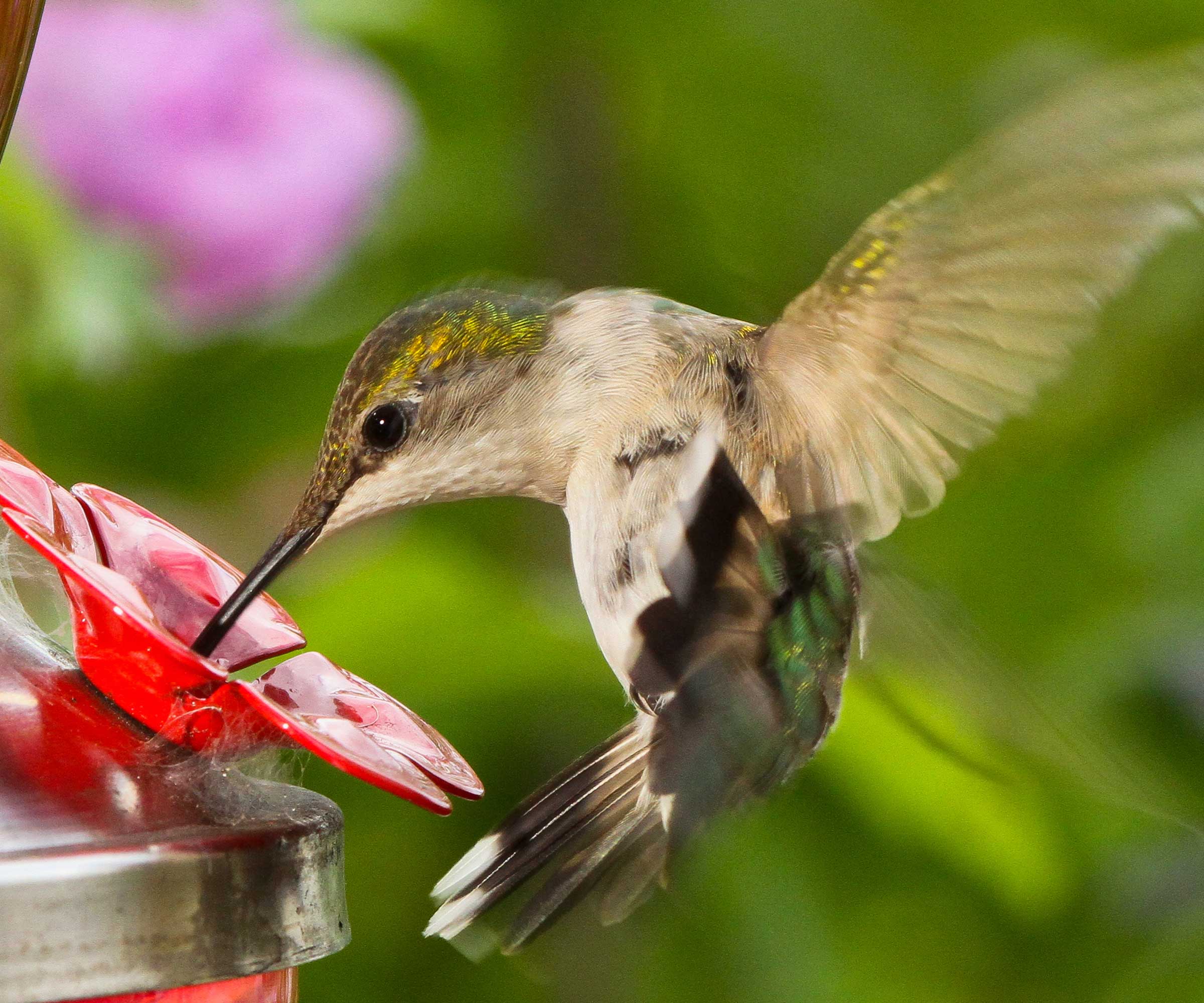
One of the most effective ways to keep ants out is to use an ant moat, available at Amazon. These are small dishes that contain water, creating an effective barrier that ants cannot cross. Stainless steel ant moats are particularly good at holding up against the elements, plus they are easy to clean.
Zach Hutchinson is an ornithologist at the nation's largest bird conservation group, a hummingbird bander, and a consultant for the wild bird feeding industry. He explains that many hummingbird feeders use moats at the top of the feeders that can be filled with water.
'While these moats do not reflect the moats of days long past, they can be used to prevent ants from reaching the sweet, sugary goodness of nectar,' he says. Just make sure you keep the ant moat topped up with water, otherwise the feeder will likely be visited by ants. If your existing hummingbird feeder does not have an ant moat, these are available to buy separately.

Zach Hutchinson is the owner of FlockingAround.com and an ornithologist striving to ignite bird conservation globally. He is also the creator of the Great Wyoming Birding Trail and the author of Birding in Yellowstone National Park. Zach has banded and tagged over 15,000 wild birds and has efforted to protect birds for over a decade.
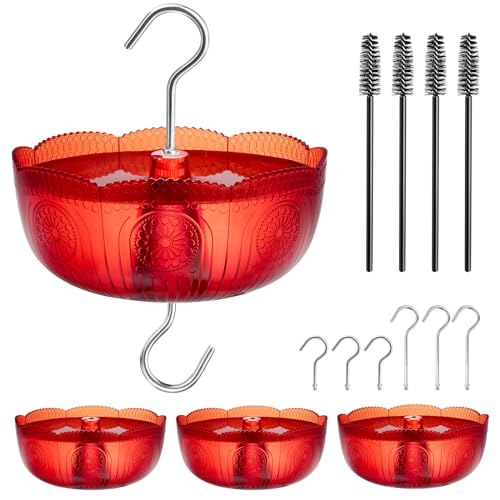
The hard clear plastic moat is made of high-quality plastic that looks attractive and will keep ants out of your feeders.
2. Keep your bird feeder clean
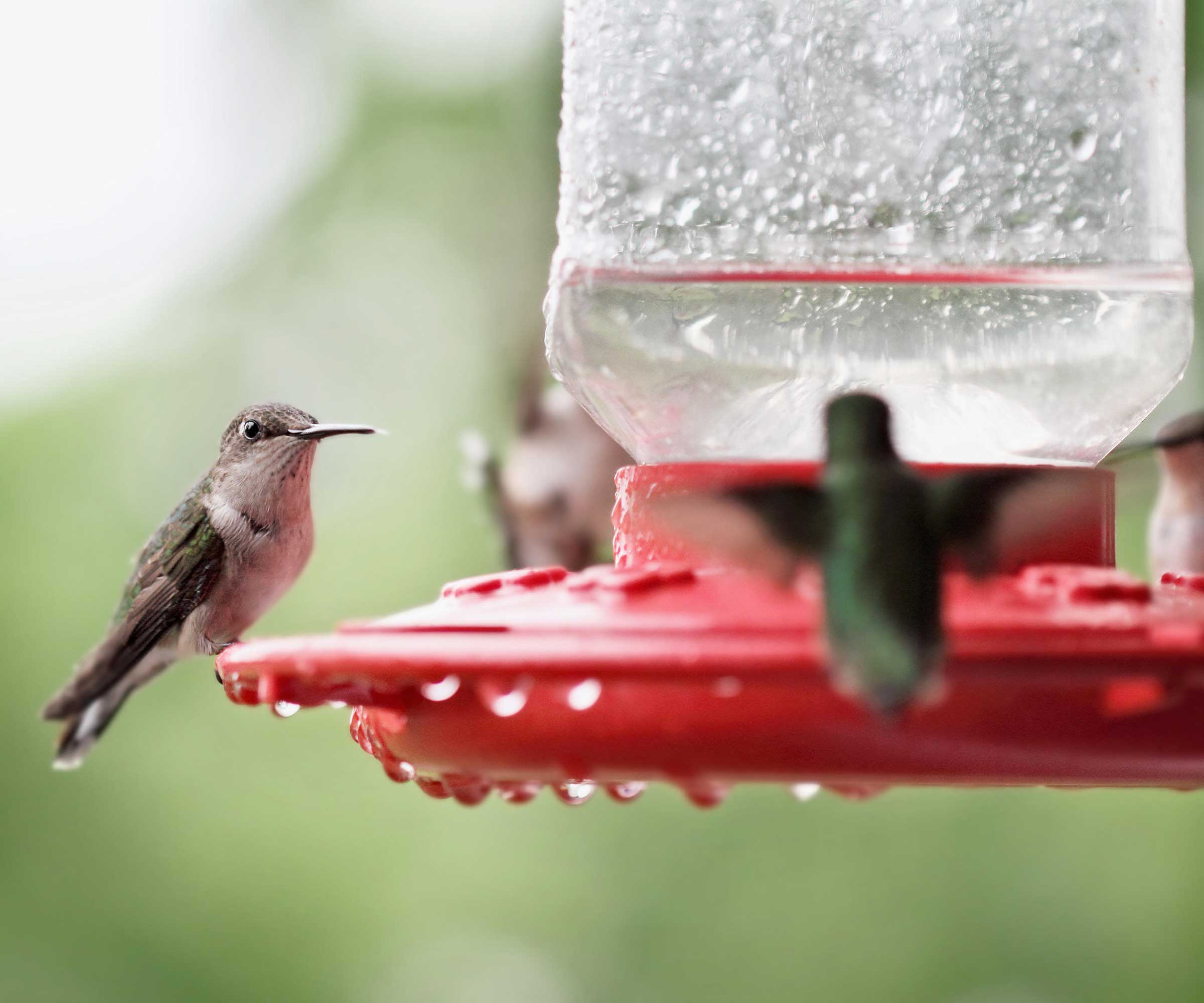
An easy way to reduce the presence of ants, and keep bees away from hummingbird feeders, too, is to keep on top of cleaning. Little and often is best, and you might even consider cleaning your hummingbird feeder on a daily basis as part of your plant-watering routine.
Consistent cleaning will avoid any leftover residue from building up, which might attract ants. If your feeder has simply seen better days, consider replacing it with an attractive mason jar hummingbird feeder, such as this one from Amazon.
3. Consider regularly changing the placement of your feeder
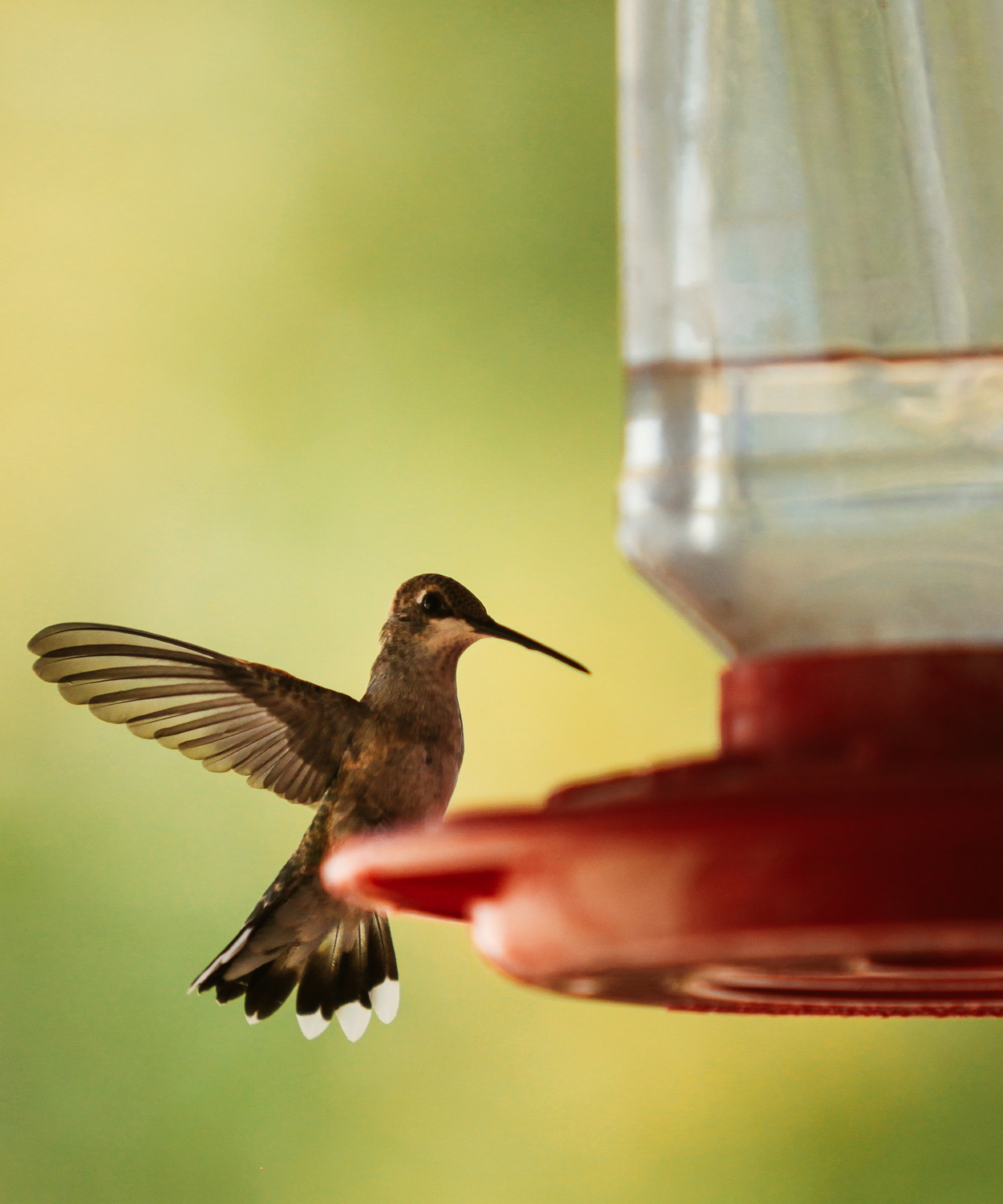
Thinking about hummingbird feeder placement is essential – the perfect position for a feeder is a shady spot that isn't too near to any trees or anything that ants might be able to use as a bridge onto the feeder. A cool spot will be best for keeping the nectar fresh, and, of course, it needs to be somewhere you can see it easily.
'Being close to ant colonies, ant aphid farms, or too near structures that already attract ants can exacerbate your ant problem,' comments Zach Hutchinson. 'However, if you can mount a hummingbird without direct contact with the ground, you can minimize access for ants.
'Suspension cables, pulley systems, and other similar hanging systems can minimize the ability of ants to detect your sugar water as well as their ability to climb to it.' A thin and slippery fishing line is another option that is often recommended by the experts.
If you live in an area with persistent ants or find ant moats challenging to maintain, hanging your feeder over a large body of water could be an effective deterrent.
Consider placing it in the center of a wildlife pond or other water feature. Ants are unlikely to cross a significant amount of water, and the hummingbirds will appreciate having a place to cool down and bathe nearby.
If ants keep on coming back, try repositioning the feeder in your backyard, and you may find this does the trick. Changing its position fairly regularly, or simply it to a new spot on the deck or patio may be all you need to do.
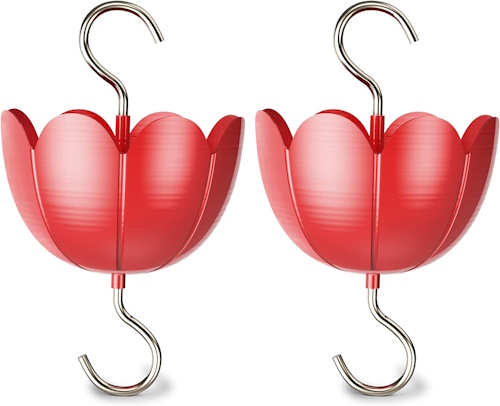
This ant moat has an attractive flower-shaped design that resembles a red tulip.
4. Sprinkle cinnamon or use essential oils as an ant deterrent
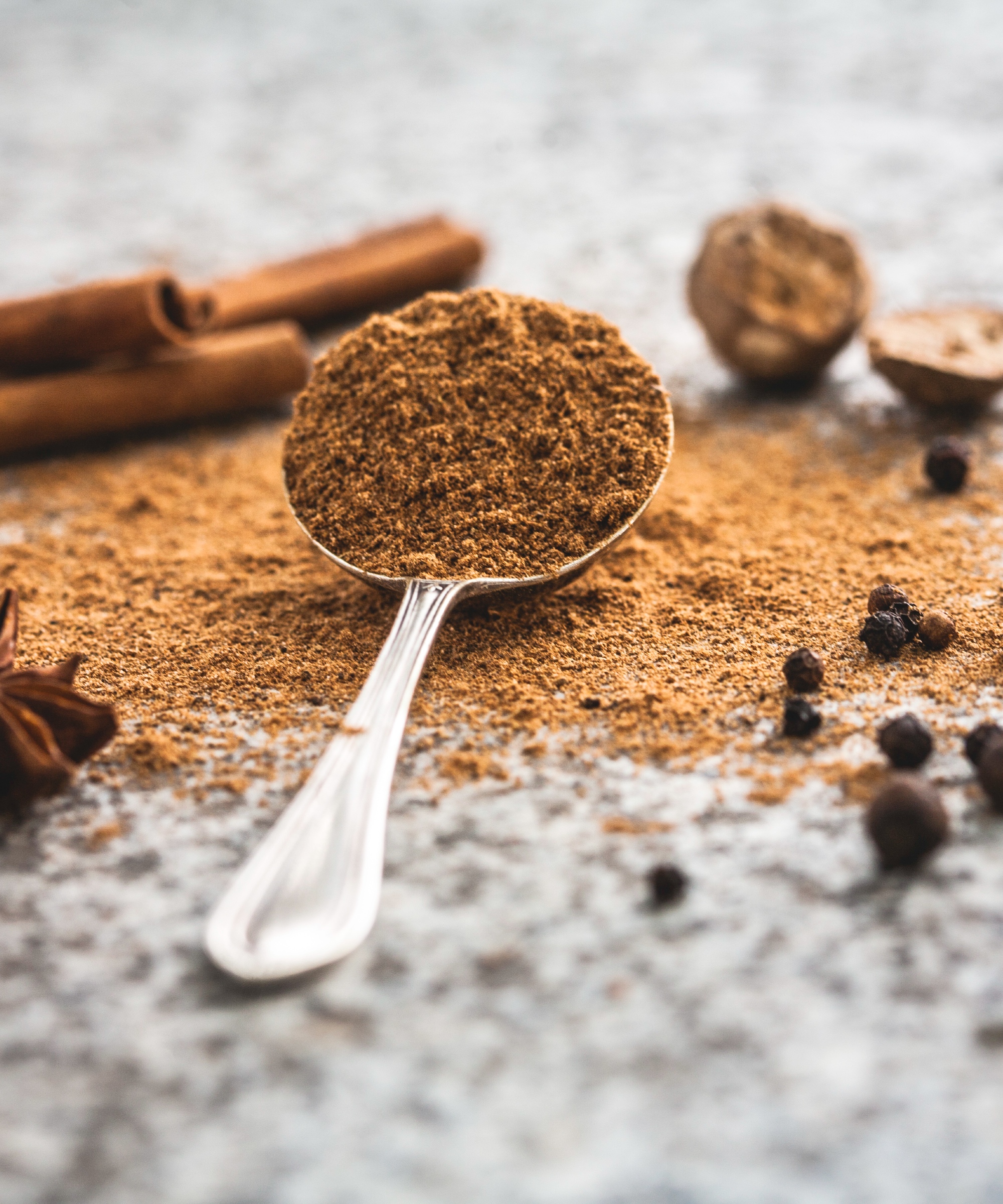
A solution might just be waiting in your spice drawer, as cinnamon is a powerful ant deterrent, and can also be used when getting rid of ants in the kitchen. Spices can be used to deter common garden pests, and this is a quick and easy option to try.
'Not only does cinnamon create some delicious desserts, but it also can stop ants from approaching the feeding zones for hummingbirds,' agrees Zach Hutchinson. 'Spread a heavy layer of cinnamon around the base of the hooks or other infrastructure used to hold your hummingbird feeders.'
Natural, essential oils, such as clove, lemongrass or anise, are also known to be very effective at deterring ants, as well as bees and yellow jackets.
Avoid putting the cinnamon or oils directly on your feeder, however. Positioning a small saucer of spice or oil nearby or below your feeder should be enough to prove effective.
Cinnamon is available to order from Walmart.
5. Hang your hummingbird feeder using fishing line
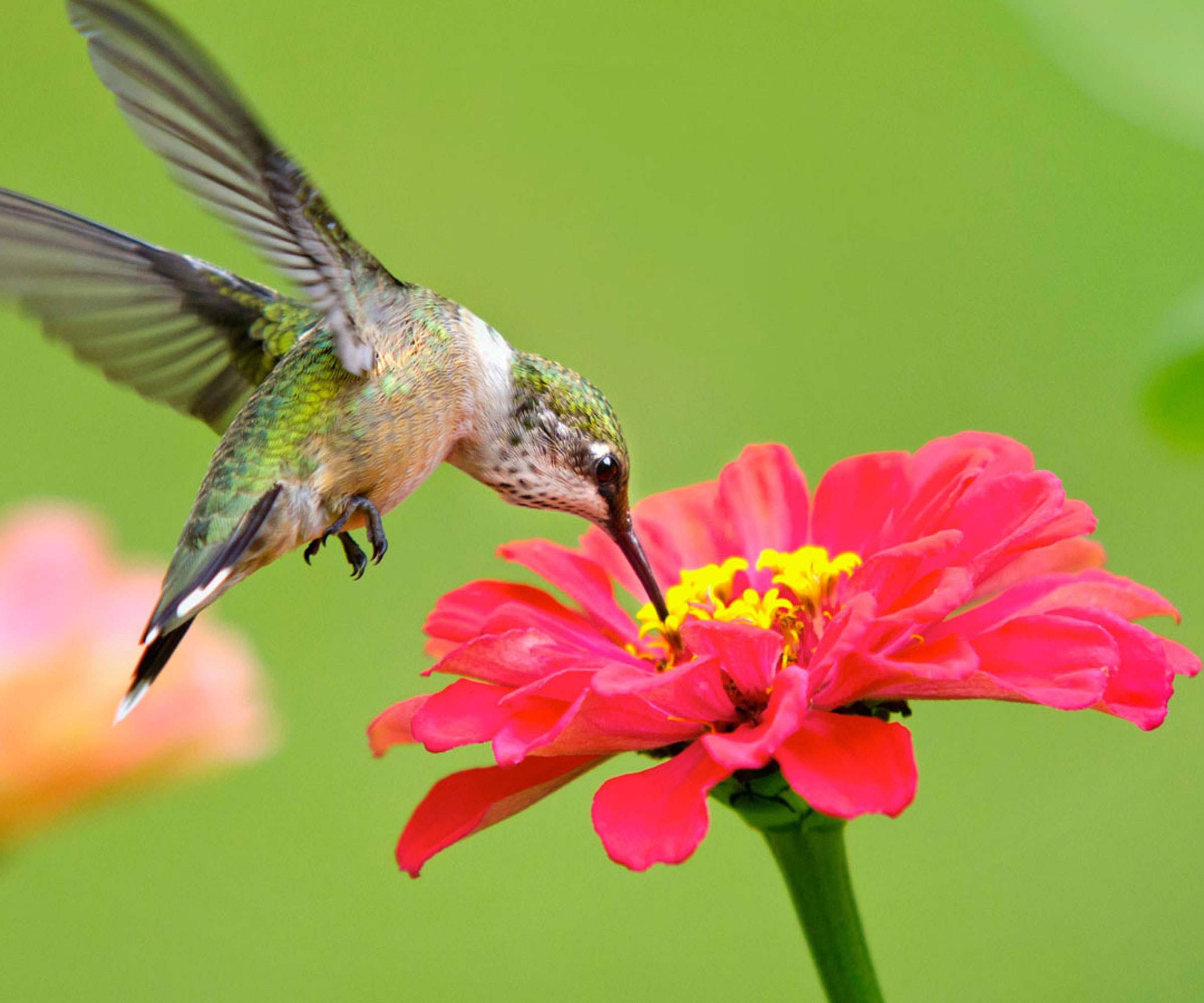
Fishing line, available at Amazon, is incredibly durable yet super thin, so much so that ants find it difficult to hang on to it. If you use it to hang your hummingbird feeder from a tree, a high branch, or a guttering at the side of your shed, this can prevent those pesky ants from reaching it.
They are also less likely to be attracted to a feeder that is positioned in the shade, as the sugar water will not ferment as quickly as when out of the sun. You can still attract your beautiful hummingbirds to these areas by adding shade plants for hummingbirds.
6. Avoid pesticides near wildlife feeders
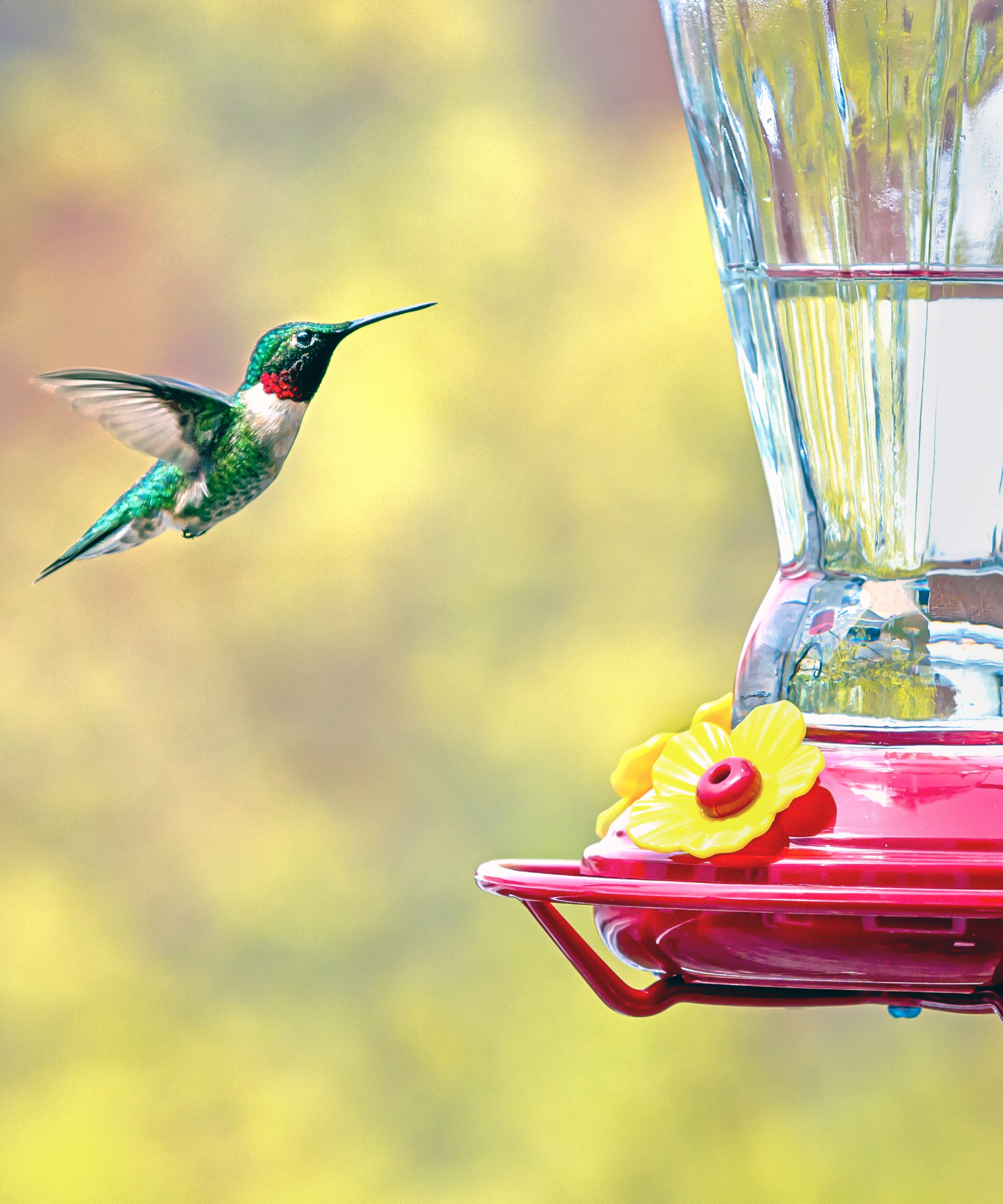
Steer clear of any harsh chemicals and pesticides in your wildlife garden because they can harm hummingbirds and other birds in your backyard. Experts will tell you that many insect repellents can harm other pollinators, such as bees and butterflies, too, and are often expensive and less effective than regular cleaning and natural methods like cinnamon.
Natural ways to encourage these feathered friends into our yards is to strategically plant flowers in colors that attract hummingbirds, such as red dahlias or orange zinnias. You could also put out fruit as another inexpensive way to attract hummingbirds.
FAQs
Does Vaseline or vegetable oil keep ants out of hummingbird feeders?
It may make surfaces slippery, preventing ants, but wildlife experts firmly advise against it: 'Please do not use any greases to prevent ants from climbing onto hummingbird feeders,' says ornithologist Zach Hutchinson. 'If this grease or oil gets onto the hummingbirds, it can be deadly.'
These oils affect a hummingbird's ability to control its feathers, which then impacts its ability to thermoregulate. With this ability inhibited, hummingbirds can suffer hypothermia or heat exhaustion in a matter of minutes. This method can also kill ants and other beneficial insects, like bees and butterflies, in a most inhumane way.
Avoid this hummingbird feeder mistake by following the steps above, from daily cleaning to careful placement.
To give hummingbirds somewhere to rest and digest their food, it is also important to provide perching or resting spots in your yard, particularly during the hummingbird migration when certain species will travel thousands of miles. Consider incorporating a hummingbird perch into your outdoor space - our guide has all the information you need.
Sign up to the Homes & Gardens newsletter
Design expertise in your inbox – from inspiring decorating ideas and beautiful celebrity homes to practical gardening advice and shopping round-ups.

Millie Hurst is a freelance lifestyle writer with over six years of experience in digital journalism. Having previously worked as Solved Section Editor at Homes & Gardens and Senior SEO Editor at News UK in London and New York, Millie has written for an array of homes brands including Livingetc and Real Homes and was formerly Senior Content Editor at Ideal Home. She has written and edited countless features on home organization, decluttering and interior design and always hopes to inspire readers with new ways to enjoy their homes. She loves to weave nature-inspired decor and nods to time spent in Italy into her own home.
- Rachel BullHead of Gardens
- Thomas RutterContent Editor
-
 Kyle Richards' unconventional styling encourages you to use shelves for more than books – it's a fresh twist on 'bookshelf wealth' for 2025
Kyle Richards' unconventional styling encourages you to use shelves for more than books – it's a fresh twist on 'bookshelf wealth' for 2025The Real Housewife of Beverly Hills intentionally decorated her shelf with ceramics and accessories that have enough room to breathe, and designers love her look
By Hannah Ziegler
-
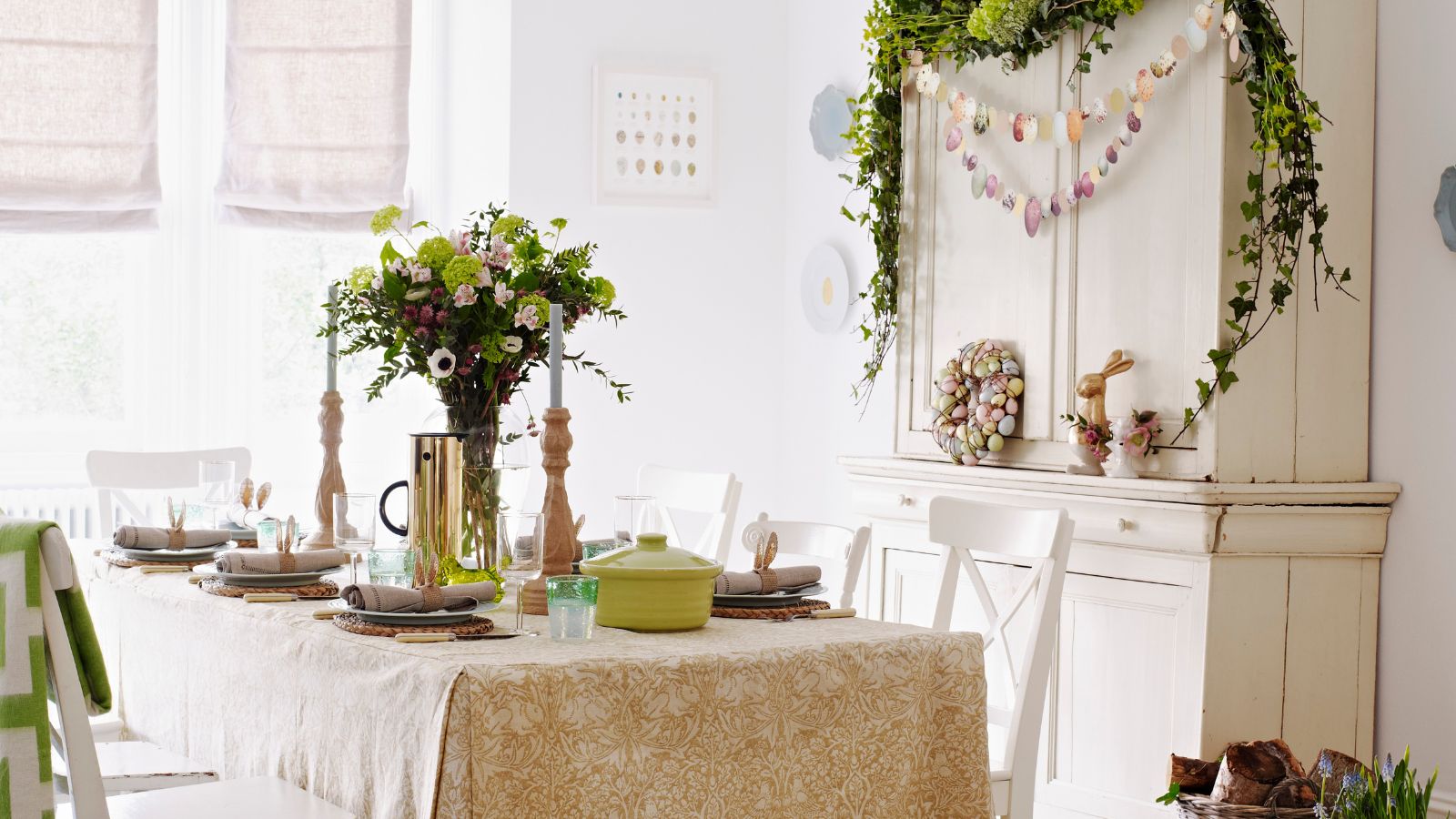 These five easy Easter place name ideas are too pretty not to try - here’s how to make them ready for Easter
These five easy Easter place name ideas are too pretty not to try - here’s how to make them ready for EasterThese easy Easter place name ideas are so simple that anyone can recreate them in time for the Easter weekend to bring personal touch to holiday hosting
By Katrina Harper-Lewis
